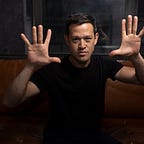Art History in Material Remains of Ciudad Perdida
In late December, 2021, I traveled to Colombia’s northern coast to trek to la Ciudad Perdida (the Lost City). The 5-day hike starts in the foothills of the Sierra Nevada, one of the most rugged coastal mountain ranges in the world, and twines up through a vibrant rainforest populated by birds and monkeys. The heat is intense; the hike isn’t for the faint of heart, but if you’re accustomed to mountain backpacking, I highly recommend this supported journey. Each day concludes in a frigid dip into a river or waterfall and excellent meals. At dusk, the sound of the forest takes over, and war stories filter through the open-air bunks. Warmed with spiced rum, I’d crawl into a hammock and fall into a deep sleep, replaying my sprints down dirt trails when gravity was better conceded than confronted.
Provisions are carried between camps by mule. The burdened beasts are led by indigenous tribe members through clay mud that justifies their wearing rain boots. Where trails split, small shops pedal handmade goods and we get replenished with fresh fruit.
On New Year’s Day we crossed a brisk river at dawn, and ascended the final stone path, so steep we were brought to our hands and knees — nearly scaling the hillside — and entered the archeological site at daybreak.
La Ciudad Perdida, a pre-Columbian jungle settlement, is often compared to its internationally renowned Peruvian counterpart, Machu Picchu. Uncovered in 1972 and located in a remote territory that was, until recently, occupied by the FARC, la Ciudad Perdida is growing in popularity; still only 20,000 tourists make the hike annually.
In addition to seeing the burgeoning tourist infrastructure around a historic site, and learning about the specific social arrangements of a pre-Columbian settlement that was never reached by Spanish explorers and colonizers, my interest was anchored in the emergence of the discipline of archeology in Colombia and the translation of a science that is optimized for finding material remains in desiccate environments into a wet, humid and eroding terrain.
The settlement is a constellation of stone terraces on a mountain ridge and hillsides. Archeologists refer to it as Buritaca-200. Buritaca is the name of the nearby river; 200 connotes that this was the 200th settlement they found in the area. A large stone–about four feet tall and two feet wide–carved with innumerable lines across its surface has been deciphered as a map of the paths between these jungle cities. Plano de piedra or stone map.
Stone steps lead from one terrace to another, and we ascended to the top of the main complex. The view was extraordinary, both limitless and confined. Overlapping mountain tops enclose any sense of escape, besieging the site that seemed massive just moments before turning around to appreciate the progress. Dense, lush vegetation everywhere. A forest that is being strangled by competing jungle lifeforms. I found myself short of breath at only 4,000 feet above sea level.
At the top of the complex, we listen to Saul, our guide, explain how this site was never reached by the Spanish, in the Age of Exploration and colonization. And the competing explanations as to why it was abandoned and uninhabited: death from disease.
He explains how the Spanish would use pathogens as weapons of war; imprisoning the indigenous warriors, infecting them, and then releasing them to introduce the disease in their encampments.
This may have certainly been a contributing factor, but any Mayanist will tell you that disease alone was not the explanation of the collapse of the Mesoamerican civilization. The Maya cities were in decline 400 years before the Spanish arrived and epidemic or disease alone could not have been the sole explanation, for the simple reason that, when a civilization is wiped out by pathogens with a high death rate, the daily activities are bringing out the dead and piling them into mass graves. There’s no evidence of mass graves in Maya territory, nor in the Buritaca settlements.
Back in Bogotá I began researching La Ciudad Perdida. A glance at the bibliography of many archeological studies of Colombia, the references point to North America and Europe. Methodologies, such as morphological studies that seek to create a chronology are evident. In Mesopotamia the morphology of jars and vases creates a timeline; in Ciudad Perdida the morphology focuses on the terrace shapes.
Back in New York, I found Bruce Trigger’s History of Archeological Thought to be a useful meta-analysis of what it was that archeologists sought to do, or rather, what societies aimed to achieve with archeological data. Obviously, this has changed in the two centuries that people have methodically digging through material remains. By the 1940s and 1950s, when the archeology was just being founded in Colombia, by emigres fleeing Nazi Germany, archeology had already taken a cultural-nationalist turn. Cultural roots were more appealing than paleo archaeological questions about the origins of homo sapiens.
I found another line of inquiry in the bibliography. Archeological literature leads back to the antiquarians of the 18th Century, to the origins of art history–Johann Winkelmann. (This chapter of art history is rarely read these days; it fails to find relevance in popular discourse of identity and culture studies.) Archeology is juxtaposed to history–including art history by syntax. History is the written, textual account of the past. Archeology seeks to learn about the past through material remains. This distinction is useful not only to those of us who enjoy manipulating the material world around us, but is liberating to learn how historians have articulated their interest in art and how we may have presumed those articulations. Just as these early writings on ancient art founded a discourse that directed subsequent generations of art historians to debate beauty and the materials from which it was shaped–wood, ivory, bronze and marble–so too did these early archeologists lay the cornerstones of future generations that toiled in the dirt.
